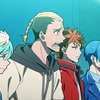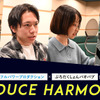as we've talked about in this very column, JManga is by no means the first bold, direct entry Japanese publishers have tried to make into the English-speaking market.

“CV草尾毅”のサプライズ出演に涙!涙! 「誰かの力になりたい。そういう想いが大切なんだ」…各キャラのことがちょっとだけ好きになれた「鎧真伝サムライトルーパー」第3話【ネタバレあり反応まとめ】

Jmanga.com: Even In The Future I Can't Throw Away My Books

“声優になる”本気度に火が付く! 声優育成プロジェクト「Produce Harmony」レッスン生に直撃インタビュー【PR】